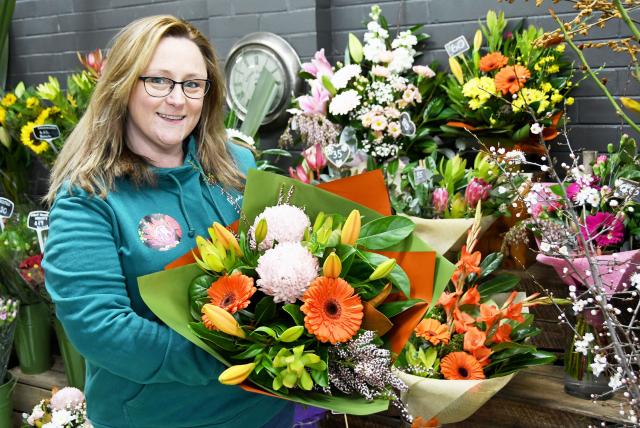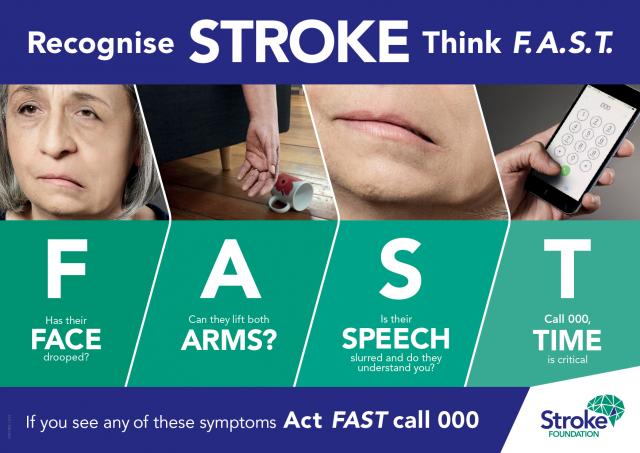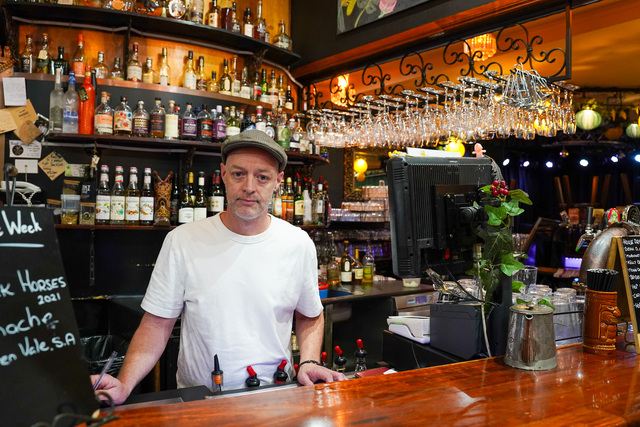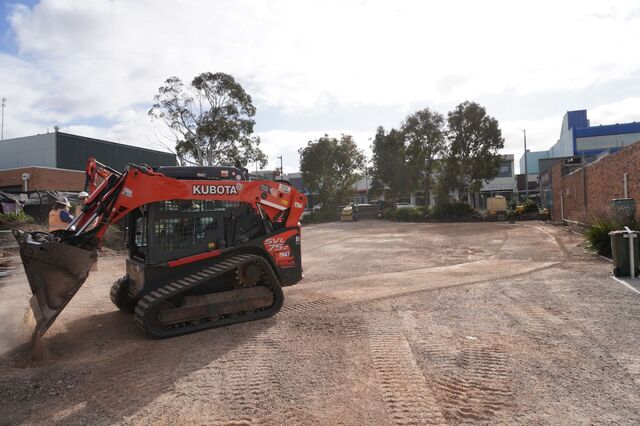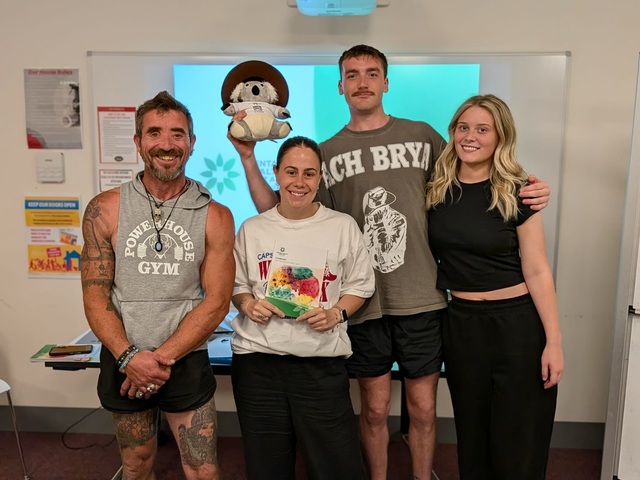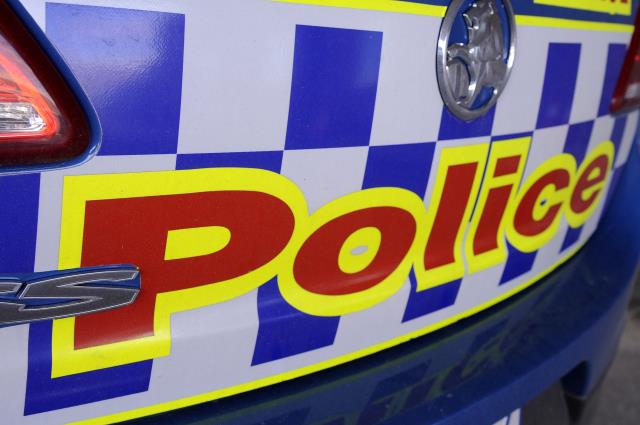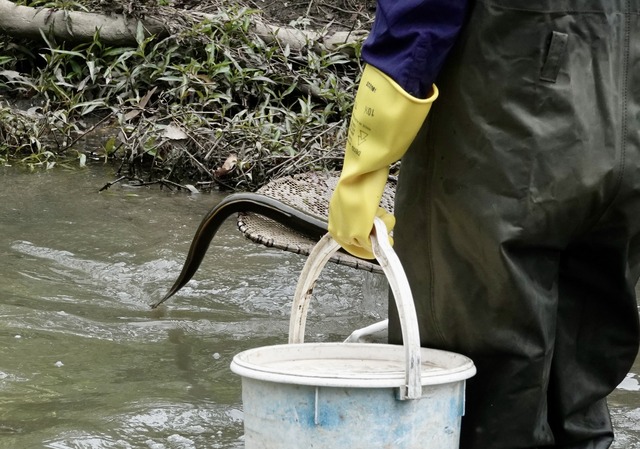A week after her 40th birthday, Kelly Wilson experienced a stroke.
While her memory is foggy, Kelly remembers knowing something was wrong, and needing help.
Fortunately, Kelly’s partner Bruce was home on 24 September 2018 and was able to call triple-0.
Had it been five minutes later when Bruce had left for work, Kelly said her recovery would have been a “completely different story”.
“The clot in my brain was two thirds the size of my hand, so I should not be talking and I should not be walking,” Kelly said.
After leaving Kelly’s home in The Basin, paramedics spotted a Mobile Stroke Unit nearby.
Medical professionals were then able to perform a CT scan on Kelly immediately and provide her with treatment to thin the clot.
By the time Kelly had arrived at Monash hospital, she was without speech, but had regained feeling in her hand and was making noises.
In the ward at Monash Hospital, Kelly said she was “popular” as the first patient to be admitted after receiving treatment for the Mobile Stroke Unit.
She was also up talking to and helping neighbouring patients in the ward; something hospital staff weren’t used to seeing – especially in a patient with a clot that particular size.
“I remember once [a] doctor came to look for me and I wasn’t in the bed – they were like ‘where is she?,’ but I’m over here at the window,” Kelly said.
“They were just shocked that I was already standing up [because] of what they see every day, and [my] scans.
I should not have been up so quick, but it’s just that simple; I just got the treatment fast. That’s definitely what saved me, [the] Mobile Stroke Unit [staff] are my saviors.”
With one Mobile Stroke Unit currently operating in Australia, another two are in planning; one in Victoria and another in New South Wales, according to Stroke Foundation CEO Sharon McGowan.
“Mobile stroke units are definitely the next major innovation in emergency stroke care. They’re happening all over the world…It’s like bringing the emergency department to the patient’s drive,” Sharon said.
Sharon said 80 per cent of strokes are caused by a blood clot leading to a blocked blood vessel, but the other 20 per cent of strokes are due to a burst blood vessel.
This is why mobile stroke units, with a portable mobile brain scanner on board, are so important in identifying the type of stroke and necessary treatment for patients.
“The technology is big and cumbersome at the moment and quite expensive, but we have an incredible team working on researching how to develop lightweight brain scanning technology,and we absolutely believe that within 10 years, every ambulance in this country will have the ability to deliver lightweight brain scanning technology so that every person who is suspected of having a stroke can have a brain scan.”
Since 2018, Kelly has had hydrotherapy and physiotherapy for recovery, and still struggles with fatigue, speech and balance
On the three and a half year anniversary Kelly surviving her stroke, she landed a job working a couple of days a week for the Wandin Florist, after losing her own florist 25 years ago.
“It’s come full circle, really,” she said.
24 per cent of strokes in Australia happen to people of working age; including parents who are trying to make a living and support their families; which is why Kelly wishes there was more after-hospital care and also support for the families of stroke survivors.
“For the young stroke people (35-55 years old), there’s not much other help; you only get five visits out of your GP for physio or osteo…[you] probably could do with a bit more of that,” she said.
“My other half’s still got nothing. There’s been no offer of support for him. He’s the one who’s seen me and the all the trauma of it. He’s had to look after the kids and all the finances, there’s been no support for him.”
Sharon said peer to peer discussion networks in a safe online community are really important for stroke survivors throughout their recovery, and the Stroke Foundation provides information to help survivors prevent a secondary stroke.
“That might be making sure that people have followed up with their with their GP, they know how to take their medication, they know how to maintain an active and healthy lifestyle, because we really want to make sure that people don’t have another stroke,” Sharon said.
“Reducing your risk factors, so that might be keeping active, reducing your alcohol, stopping smoking if you’re a smoker, making sure your blood pressure is kept within normal range, eating a healthy diet, people need support for this, these changes aren’t easy.”
Sharon acknowledges recovery can be a challenging process for stroke survivors as well as friends and family, and the Stroke Foundation can provide resources to connect survivors and their loved ones with local community groups who share similar experiences.
“It’s making sure that people have access to their GP, that they were referred into appropriate rehabilitation services by people who are trained in stroke. And if necessary ongoing support, either through the National Disability Insurance Scheme, or through development aged care services. So it’s about navigating the healthcare system, and that’s what the Stroke Foundation want the next Victorian government to support us to develop a stroke navigator service.”
National Stroke Week 2022 ran from Monday 8 August to Sunday 14 August, with the main message to share the F.A.S.T. (Face, Arms, Speech, Time) signs of stroke message with family and friends.
F is for face – has it drooped?
A is for arms – can they lift both arms?
S is for speech – Is their speech slurred? Can I understand you?
T is time – minutes count after you’ve had a stroke, every stroke is a triple zero call.
“The easy thing to do is to learn the F.A.S.T message – so think fast and act fast,” Sharon said.
For more information on stroke awareness, visit https://strokefoundation.org.au/what-we-do/prevention-programs/national-stroke-week

